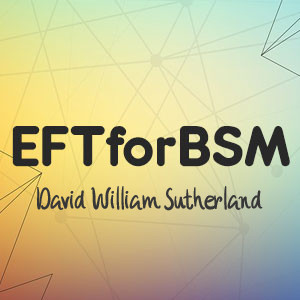
EFTforBSM
In three years, the LHC will resume an intensive programme of data collection in the search for new TeV scale physics. This project aims to combine new ideas from effective field theory (EFT) and modern amplitude methods to develop a systematic approach to this search. Recently, Hilbert series methods have developed to efficiently construct the EFT lagrangian order by order in a momentum expansion. Modern spinor helicity techniques enable efficient manipulations of amplitudes, now including those with massive states. Borrowing from these tools, we aim to develop an algorithmic procedure to rapidly construct the generic scattering amplitudes of an EFT. Then we will apply the dual lagrangian and S-matrix descriptions to the Standard Model EFT, on the hunt for intrinsic structure within its multi-dimensional parameter space. For instance, we will make use of RG ows in the lagrangian to catalogue the attractive directions where heavy new physics necessarily gravitates in the IR. Through the principles of analyticity and unitarity of the S-matrix, we may derive positivity constraints on the Wilson coecients, narrowing the space we have to search. We will employ constructibility methods to make ecient, precise predictions for observables, which isolate the exact regions in phase space where new physics dominates and, by pushing to higher orders, where the EFT expansion breaks down. Through the above, we will develop a comprehensive strategy on where and how to look for new physics at the LHC, based on universal properties of the lagrangian and S-matrix. The techniques, once honed on the rich structure of the Standard Model, can also be applied to a range of other eld theories, such as those within hadron physics. By rejuvenating the application of certain techniques of eld and scattering theory to phenomenologically relevant and complex EFTs, this project will bring new guidance to the search for physics within and beyond the Standard Model. cients, narrowing the space we have to search. We will employ constructibility methods to make efficient, precise predictions for observables, which isolate the exact regions in phase space where new physics dominates and, by pushing to higher orders, where the EFT expansion breaks down. Through the above, we will develop a comprehensive strategy on where and how to look for new physics at the LHC, based on universal properties of the lagrangian and S-matrix. The techniques, once honed on the rich structure of the Standard Model, can also be applied to a range of other field theories, such as those within hadron physics. By rejuvenating the application of certain techniques of eld and scattering theory to phenomenologically relevant and complex EFTs, this project will bring new guidance to the search for physics within and beyond the Standard Model.

Back to Category
